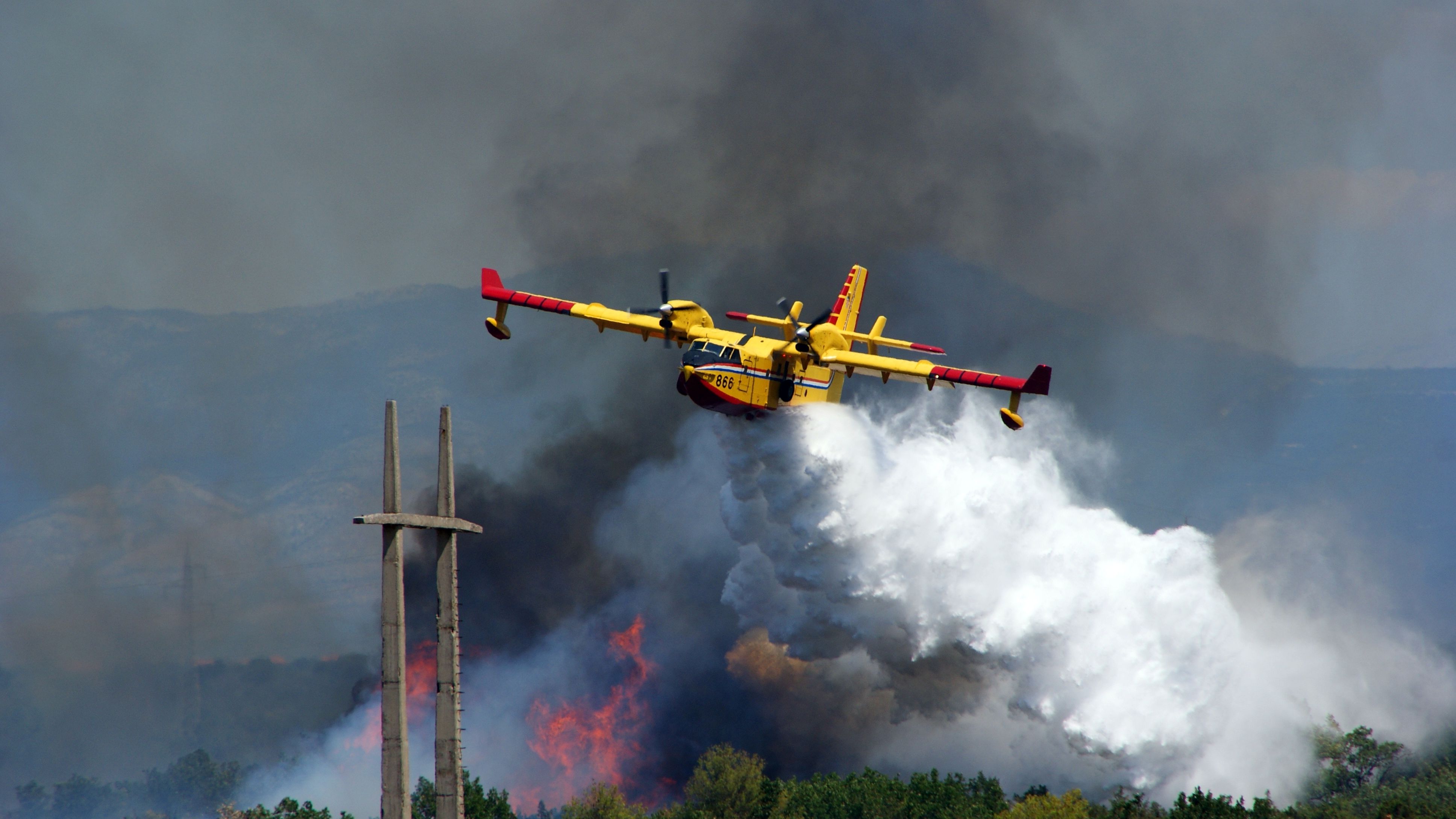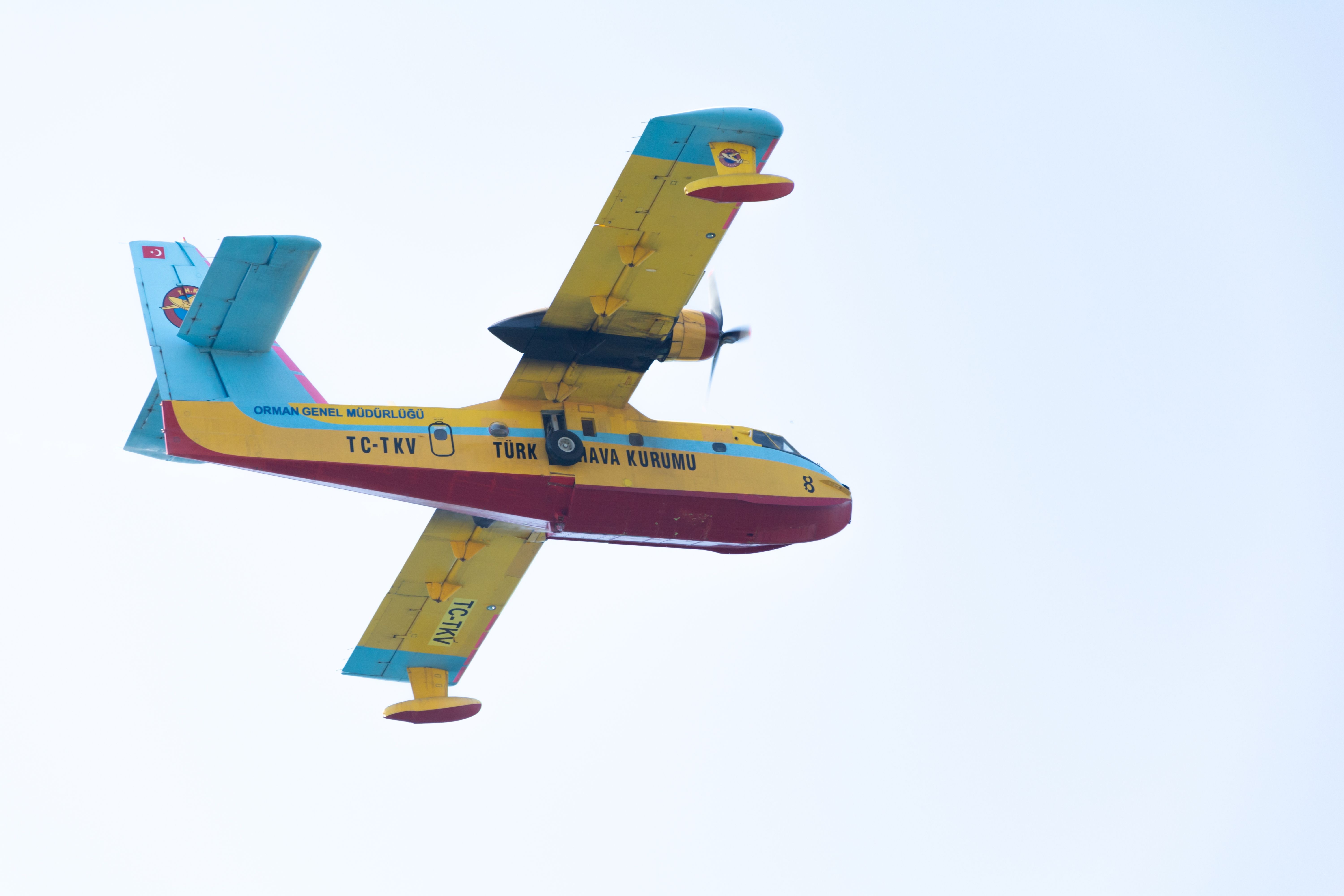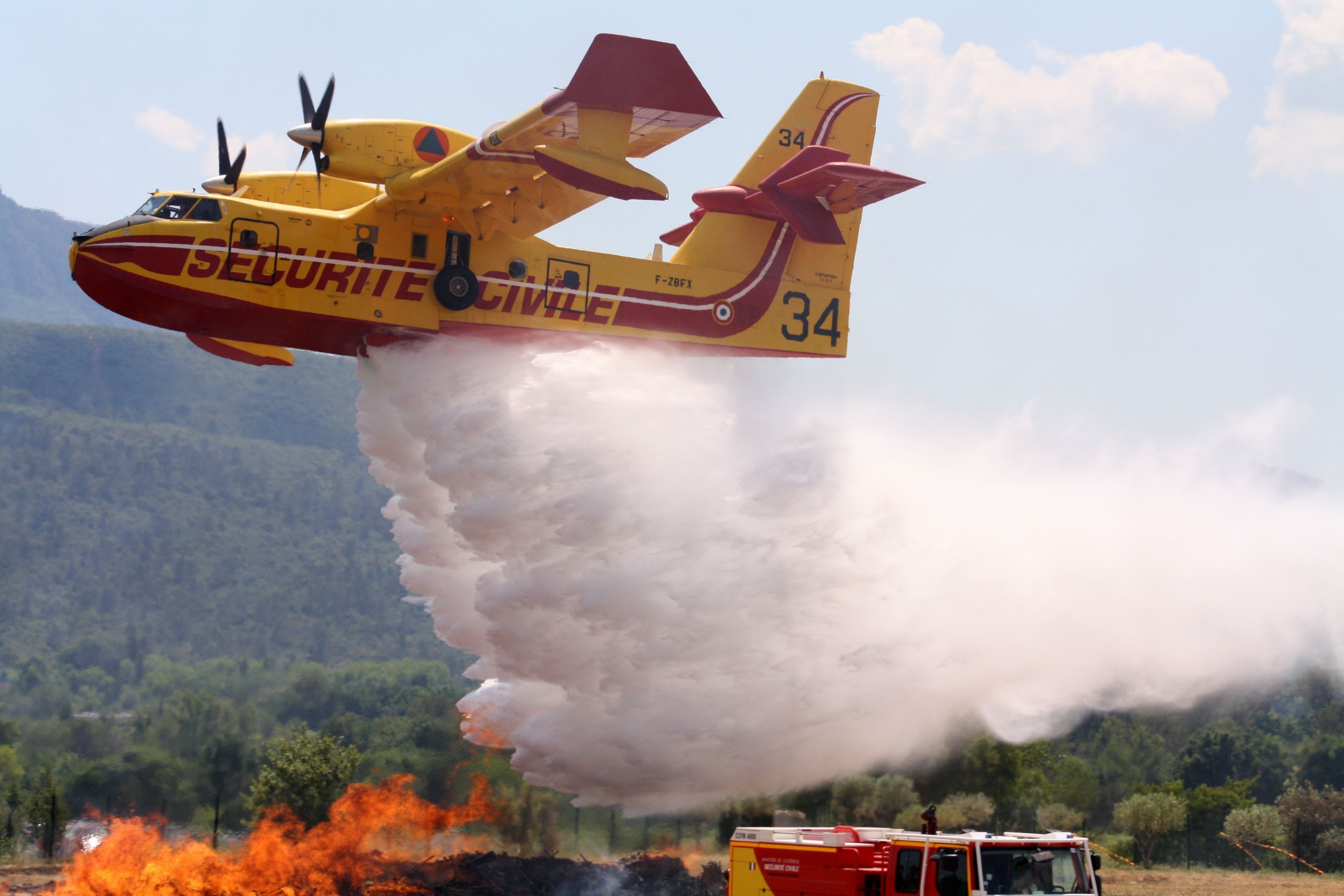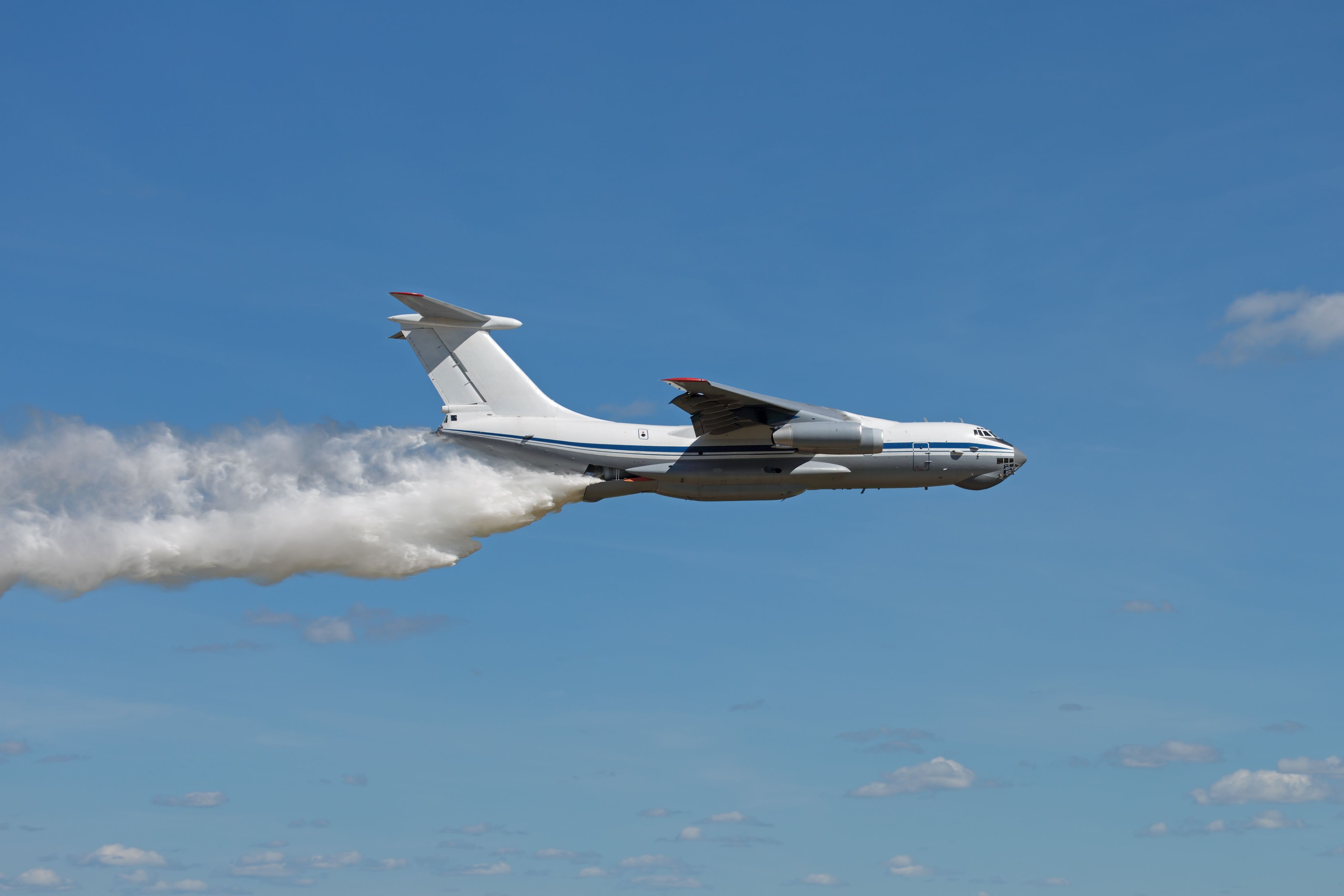One of the safest and most effective ways of combating fire is from the air. Aerial firefighter crews can work to extinguish wildfires from a safe distance, also reaching areas otherwise inaccessible from the ground.
Government agencies call on private companies
First, let's take a look at the business of aerial firefighting. Aerial firefighters can be a variety of aircraft, including helicopters, turboprops, modified commercial narrowbody jets, and even widebody commercial jets.
Some aerial firefighter aircraft are owned by government agencies. A good example is California's Department of Forestry and Fire Protection (CAL Fire), whose fleet of over 60 fixed-wing and rotary-wing make it "the largest civil aerial firefighting fleet in the world."
However, aerial firefighters can also be owned by private, for-profit companies. Some examples include:
- 10 Tanker and its four DC-10 tankers
- Conair Aerial Firefighting and its fleet of modified Dash 8s and Avro RJ85s
- Coulson Aviation, whose fleet comprises five Boeing 737-300 'Fireliners'
- Global Supertanker, which formerly operated the Boeing 747 'Supertanker'
Governments often call upon these types of companies for their firefighting needs. This may range from a signed contract for a fixed term to a last-minute request. Not only does this allow countries (or states or provinces) to use the waterbombers as needed, but it theoretically means that these private companies have more agility in serving year-round across all parts of the world.
In terms of cost, Edward G. Keating, a senior economist at the RAND Corporation, told Frontline Wildfire Defense System that "retardant costs about $3 a gallon. When you're dropping 3,000 gallons per drop, that's $9,000 every time." Keating added that tankers can cost around $6,000 per hour to operate.
Discover more aviation news with Simple Flying.
Collecting and storing water
As we have seen from the above examples, aerial firefighters may once have been commercial passenger aircraft. Modification to their new role requires removing most if not all, passenger seating and overhead bins and replacing that space with large tanks to store water (or foam, gel, or retardant).
However, in the case of Conair's Q400ATs and 10 Tanker's DC-10s, an external tank is added beneath the belly of the plane. Conair told Air Attack magazine that external tanks are more reliable and easier to work with.
For most aircraft, tanks are filled on the ground using hoses. However, other, more specialized aircraft are fitted with retractable 'scoops' on the hull. When deployed, these scoops refill tanks while skimming across the surface of a lake. The Martin Mars, two of which are operated by Coulson Aircrane, is an example of an aircraft with this capability.
Discharging the load
Whether it's water, foam, or some other fire retardant, these aerial tankers are dispatched to their assigned location to make the drop. At the right time, over the right location, the doors are opened, and the load is discharged, typically drawn out by gravity (without a pressure system).
The video embedded above provides a close-up view of the Global SuperTanker 747 discharging water. For this particular aircraft and its internal tanks, the substance is dropped via discharge pipes.
Why fight fire from the air?
Aerial firefighting is highly effective under certain circumstances, offering significant advantages over conventional ground firefighting techniques. In cases like expansive wildfires, it's challenging to imagine dealing with the situation in any other way, given the scope and danger of the situation.
As well as enabling access to areas unreachable from the ground, aircraft can be deployed rapidly, allowing firefighting teams to respond immediately to emergencies. They are also excellent at covering large areas. Most readers will have seen clips of aircraft dropping water over fires, but this isn't the only purpose of aerial firefighting aircraft. Planes and helicopters can be utilized for a variety of essential functions, including:
- Retardant drops: Rather than dropping gallons of water on wildfires, fire retardant or foam will be used instead.
- Reconnaissance: Aircraft can be used to monitor fires and provide real-time information for firefighting crews.
- Parachuting: Ground teams can parachute into difficult-to-reach areas to better combat fires.
Safety is essential during aerial firefighting operations because of the environment and close maneuvering involved. There have been too many unfortunate accidents over the years - most recently, a Canadair CL-215 scoop plane crashed in Greece while fighting wildfires this summer, killing both of its pilots.
Increasing demand for aerial firefighting
The world went through its hottest month on record in July 2023, a warming trend which, unfortunately, increases the risk of wildfire events. Europe suffered multiple wildfire outbreaks, while countries like Australia are likely to see their annual wildfire situation worsen. Mike Rotonda, Aerial Firefighting Manager at Erickson, told AirMed&Rescue,
"There is an increasing demand for firefighting aircraft worldwide, due to warmer, drier conditions. Summers are getting hotter and drier, while also lasting longer. We are seeing wildfires in areas that historically do not experience these conditions. For example, there were major wildfires in Northern Europe and Northern Alaska last summer. We still have the capacity to respond, but there may come a time when demand outstrips the [supply of] available aircraft."
With wildfire threats increasing, some countries are investing heavily in firetanker acquisition. One example is Australia, which has a fleet of over 50 aircraft available for the state of Victoria alone. Many will have seen the situation in southern Europe this summer, causing devastation and impacting millions of people - in response, the European Union plans to invest over $760 million into a new fleet of firefighting aircraft. De Havilland Canada has since said it will restart production of its Canadair scoopers if it receives a major order after it ceased production back in 2015.
Have you seen an aerial firefighter for yourself yet? Do you have any experience piloting such an aircraft? Let us know in the comments.
Source: Frontline Wildfire Defense System, Air Attack, AirMed&Rescue




